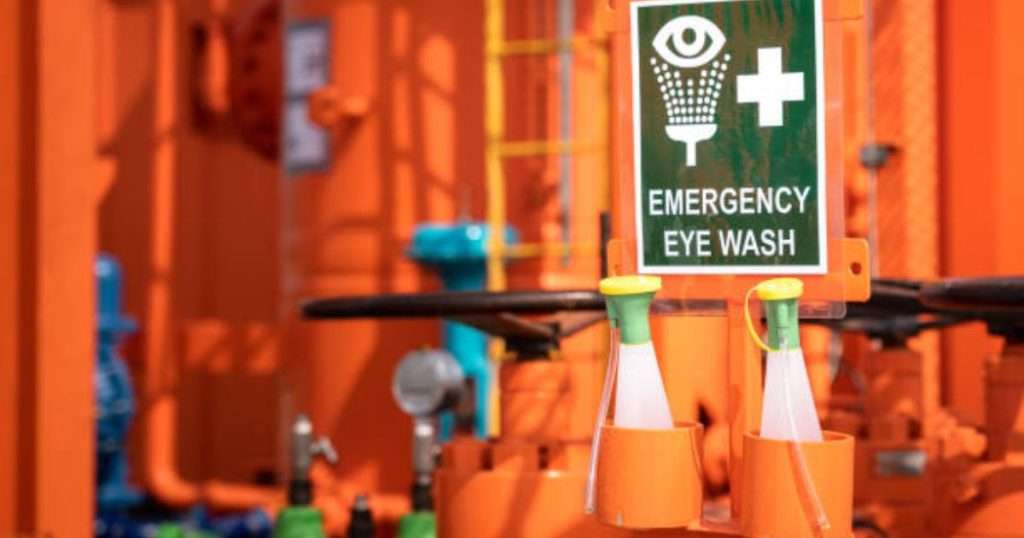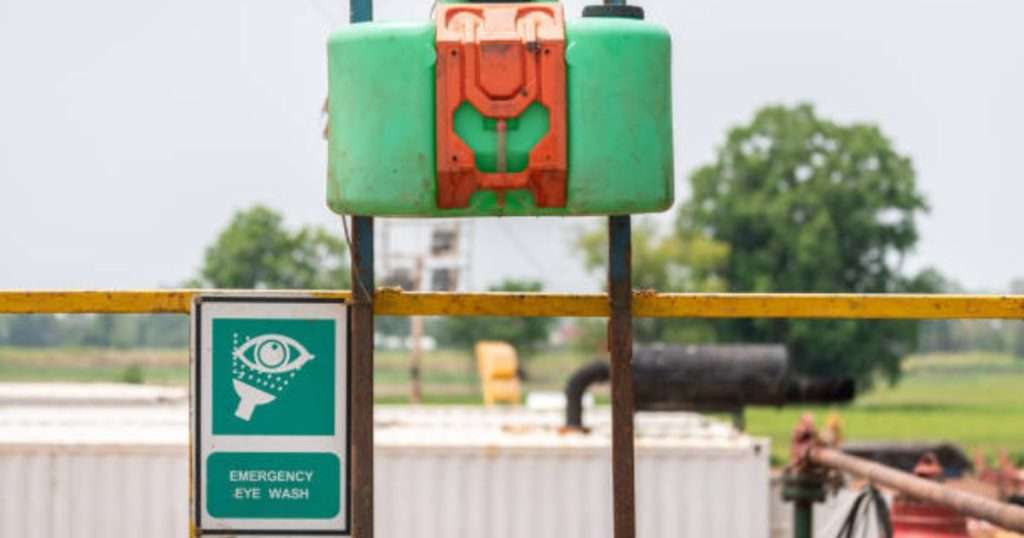Table of Contents
In workplaces where exposure to hazardous materials is a concern, having a reliable eyewash is critical to employee safety. Traditionally the plumbed eyewash is not considered portable and often installed in fixed locations, but advances in technology have created mobile eyewash, providing a flexible and mobile solution for many different industries. On the other hand, lead-free eyewash stations are a reliable choice for any workplace emergency, as the workers quickly can remember the location of the station because it stays in one place.
Importance of plumbed eyewash station
The eyes are one of the most sensitive organs in the body and permanent damage can occur within seconds. To protect workers from accidental eye splashes, facilities that store hazardous chemicals must have eyewash stations in the workplace. A plumbed station could be portable and also easily accessible. This allows workers to quickly remove any hazardous substances with liquids such as drinking water or saline solution.
The need for mobile eyewash stations:
-
Dynamic working environment
Industries such as construction, field research, and emergency response require workers to move from one location to another. A plumbed eyewash station is portable in some versions, with a tube which provides workers an instant access to eyewash services. Being accessible anywhere and anytime, the portable stations meet the challenges of a dynamic work environment, allowing flexibility in their location. This can allow for easy relocation if workplace hazards change.
-
Temporary workplace
Construction projects or temporary sites may lack permanent security features. A portable plumbed eyewash station, providing a temporary but effective solution that meets safety standards without permanent installation. Portable eyewashes are useful even if the workplace is temporary and changes from time to time. The point is that we can take this eye wash station anywhere and it is affordable in all conditions.
-
Convenience
The portable plumbed eyewash station is the most common type of safety eyewash and this portable version is something that you can take with you wherever you go, whether it’s a warehouse, farm, or office. These eyewashes are easy to install into your workspace without taking up much space, time and can be moved as needed by anyone at any time and place.

Here are some features of the portable leaded eyewash station
-
Mobility
The main characteristic of portable lead eyewash stations is their portability. Furnished with wheels or handles, these units can be easily transported to different locations, ensuring the accessibility of an emergency eyewash wherever needed.The user must be able to operate a plumbed eyewash with one hand and in one motion of one second or less. Once operated, the water must remain still so that the harmed person can use their hands to open their eyes.
-
Connected for continuous flow
Unlike some portable eyewash solutions that depend on a gravity-fed water tank,it is attached to a water source. This ensures a continuous flow of water, meeting the basic standards for emergency shower equipment.
-
Easy to install
It can also be added in any workplace where there is a risk of eye or face contamination, such as chemical plants or factories. It is very important to note that plumbed eyewash stations must be installed in an easily available or accessible place. This means that it must be done within 10 seconds after the hazard is fully and clearly indicated on the sign. While traditional stations with a hose may require professional setup, portable units are designed for easy installation. Users can quickly connect the station to a water source and the interesting thing is that some models have a built-in water heater that provides hot water for added convenience.
-
Activation mechanism
Portable eyewash points with a hose often have a user-friendly activation mechanism, such as a pusher or foot pedal. The activation mechanism must be the simplest because this simplicity ensures that people can use the station quickly and efficiently in any emergency. A plumbed eyewash station must meet all the safety standards set by major organizations to ensure its effectiveness in emergency situations. Regular maintenance and testing is essential to ensure that these mobile devices meet the required performance and criteria.
-
Water flow
The water in the portable eyewash is always at normal room temperature. Additionally, if several stations are required in one installation it is economical and sensible to use several mobile units instead of connecting multiple fixed stations. The water flow must be maintained for at least 15 minutes. An eyewash meter should be used to monitor and control the flow pattern of water.
-
Maintenance
Make sure there is enough water flow and strong enough water pressure to wash your eyes and face effectively. Water must be free of contaminants and debris. If the water is not clear, it can cause further eye irritation. A plumbed eyewash station is portable and if any part of the eyewash is damaged, it should be replaced immediately to ensure the assembly operates normally. The stations should be cleaned and disinfected at least once a year to remove any dirt or bacteria that may accumulate there.
Common areas that require eyewashes:
- Dental offices
- Medical facilities
- Battery charging areas for forklifts
- Janitorial closets (when dispensing bulk chemicals and cleaning agents)
- Laboratories and higher education
- Oil and gas industry
- Industrial applications

Legal obligations
The American National Standards Institute (ANSI) has adopted the standard to protect workers from eye injuries that can occur when handling and storing caustic and corrosive substances. According to ANSI Z358.1, water should be at a (warm) temperature of 60 to 100°F (15.6 to 37.8°C) and complete rinsing is recommended for 15 minutes or until medical personnel arrive. For all eyewash stations, it recommends a comprehensive inspection of the facility annually to evaluate the workspace that is modified, assess emerging hazards in the target area, and identify equipment needing repair or replacement.
Requirements for a plumbed eyewash station according to ANSI are
- Assembled and installed according to the manufacturer’s instructions.
- Inaccessible locations and takes no more than 10 seconds to reach. The eyewash station must be located at the same height as the hazard and the path of travel must be free of obstructions (no doors) that could prevent immediate use.
- Located in an area identified by a prominent sign, placed so that the sign is visible in the area where the eyewash station is located.
- The area around the eye drops must be well-lit.
- Connected to a discharge fluid supply to produce the required spray pattern for a minimum of 15 minutes, 1.5 liters per minute (0.4 gallons per minute).
- Rinse aid has a warm temperature, from 16 to 38 degrees Celsius (60 to 100 degrees F).
- If there is a risk of freezing, the eyewash station must be protected from freezing or a frost protection device must be installed.
- If a shut-off valve is installed in the supply line for maintenance purposes, measures must be taken to prevent unauthorized closing.
- The actuator valve, once actuated, must always open without the use of the operator’s hands (single-action operation).
What’s our conclusion?
The development of portable plumbed eyewash stations represents a significant advancement in workplace safety. Whether in industries with dynamic work environments or in temporary workplaces, these mobile units provide a practical solution to ensure emergency eyewash facilities are always available. A plumbed station is portable and as the technology continues to advance, the innovations in safety equipment help create safer work environments for employees in various industries. It’s important to note that various emergency shower regulations and standards ensure workplace safety, particularly in cases of accidents and emergencies. Employers should be aware of these regulations and comply with them to safeguard their employees’ well-being. In summary, lead eyewash stations are an essential emergency safety device that should be considered for any facility with a risk of eye or face contamination. Although it is not necessarily considered portable, it has several advantages over other types of stationary eyewash stations, such as continuous water flow, availability, and the ability to accommodate multiple users at once.
